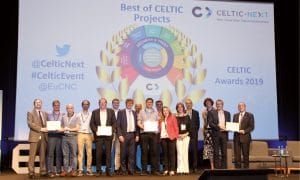Presenting our current 15 innovative projects in the domain of ICT
In the first half of 2024, the CELTIC-NEXT ICT cluster has a total of 15 ongoing projects that started between October 2021 and May 2024. These projects collectively represent cutting-edge ICT research and development efforts focused on diverse areas such as networking, AI, healthcare and wireless technologies to drive innovation and address critical challenges.
These 15 projects aim to discover technological advancements and outcomes in high technology readiness level (TRL) in the domain of ICT. In the perspective of CELTIC-NEXT vision to obtaining results with a successful technology-market oriented approach, the projects represent an investment of 132.9 millions of euros in public and private money. Around 311 companies, start-ups, SMEs and major industrial-players, Research and Technologyl Organisation (RTO), and universities are involved in actual research from 22 different countries in and outside Europe.
EMBRACE: Efficient Multi-Band netwoRk Architecture and Components for Petabit/s Elastic networks
Start Date: October 2021 End Date: October 2024 Budget (total): 3207.6 K€
Project Coordinator: Orange SA, France
 EMBRACE develops, investigates, and demonstrates the required photonic technology for a complete optical system exploiting the entire spectrum of the single mode fibre (SMF) for applications from metro to long-haul reach. This solution is supported by the large availability of SMFs with almost negligible water peak and thus extended low-loss spectral window. Right now, EMBRACE project is working on solutions to exploit the whole 1260-1625 nm spectrum. Within the project, the designed and prototyped multi-band (MB) components (coherent transceivers, optical amplifiers, wavelength selective switches, lasers) will be integrated into a permanent project demonstrator and tested over real installed fibres owned by the operators participating to the consortium.
EMBRACE develops, investigates, and demonstrates the required photonic technology for a complete optical system exploiting the entire spectrum of the single mode fibre (SMF) for applications from metro to long-haul reach. This solution is supported by the large availability of SMFs with almost negligible water peak and thus extended low-loss spectral window. Right now, EMBRACE project is working on solutions to exploit the whole 1260-1625 nm spectrum. Within the project, the designed and prototyped multi-band (MB) components (coherent transceivers, optical amplifiers, wavelength selective switches, lasers) will be integrated into a permanent project demonstrator and tested over real installed fibres owned by the operators participating to the consortium.
SAFE HOME: Security-aware fog-based efficient Home monitoring for elders
Start Date: April 2021 End Date: March 2024 Budget (total): 2853 K€
Project Coordinator: Instituto de Telecomunicações, Portugal
 SAFE-HOME is a multi-disciplinary project, which exploits the intersection of a number of disruptive technologies, namely sensor design, artificial intelligence and machine learning algorithms, and recent advances in wireless networking, with emphasis on the interoperability of fog-cloud. The project aims at designing a system for monitoring the activity and movement of elders within a confined space (Home), in order to understand their activity level, with ability to identify emergency situations for alerting specific personnel, based on emergency type (e.g. medical staff, ambulance, or emergency contact). SAFE-HOME will also consider users surrounding information (e.g. neighbourhood and city information) in order to enrich solution results.
SAFE-HOME is a multi-disciplinary project, which exploits the intersection of a number of disruptive technologies, namely sensor design, artificial intelligence and machine learning algorithms, and recent advances in wireless networking, with emphasis on the interoperability of fog-cloud. The project aims at designing a system for monitoring the activity and movement of elders within a confined space (Home), in order to understand their activity level, with ability to identify emergency situations for alerting specific personnel, based on emergency type (e.g. medical staff, ambulance, or emergency contact). SAFE-HOME will also consider users surrounding information (e.g. neighbourhood and city information) in order to enrich solution results.
iCare4NextG: Integrated care for next-generation
Start Date: April 2021 End Date: March 2024 Budget (total): 3421 K€
Project Coordinator: Turkcell Teknoloji, Turkey
 The project develops a service framework where increased possibilities for improved wellness and care at home, directed by data driven methods, integrating needs from different stages of life, different caregivers and different diagnosis. A combined strategy of service framework development, business modelling and use case solutions are undertaken and this multi-track approach aims at developing a service framework that enables the creation of flexible user solutions and a business milieu where new digital business models can flourish. Care integration would incorporate a number of different providers, to deliver to the end user in an integrated way.
The project develops a service framework where increased possibilities for improved wellness and care at home, directed by data driven methods, integrating needs from different stages of life, different caregivers and different diagnosis. A combined strategy of service framework development, business modelling and use case solutions are undertaken and this multi-track approach aims at developing a service framework that enables the creation of flexible user solutions and a business milieu where new digital business models can flourish. Care integration would incorporate a number of different providers, to deliver to the end user in an integrated way.
AI-NET Flagship: Accellerating digital transformation in Europe by Intelligent NETwork automation
Start Date: June 2021 End Date: August 2024 Budget (total): 66547 K€
Sub-projects: AI-NET-ANIARA, AI-NET-PROTECT, AI-NET-ANTILLAS
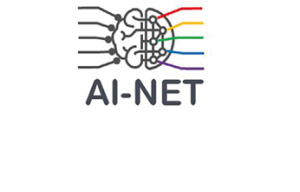 The most recent CELTIC flagship project is AI-NET, launched in mid-2021 with a €66M total budget. Public authorities of Germany, Sweden and Finland, as well as major players from industry (both large and SME), and academia, are part of this ambitious European initiative.
The most recent CELTIC flagship project is AI-NET, launched in mid-2021 with a €66M total budget. Public authorities of Germany, Sweden and Finland, as well as major players from industry (both large and SME), and academia, are part of this ambitious European initiative.
AI-NET-ANIARA: Automation of Network edge Infrastructure & Applications with Artificial Intelligence
Start Date: June 2021 End Date: January 2024 Budget (total): 11214 K€
Project Coordinator: Ericsson AB (EAB), Sweden
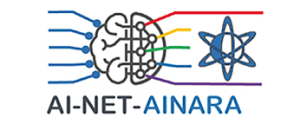 The primary objective of the ANIARA project is to provide enablers and solutions for high-performance services deployed and operated at the network edge. To manage complexity, of artificial intelligence is used, to complement traditional optimisation algorithms. Deep edge network nodes will be deployed at locations not prepared for the power requirements of edge-centric compute.
The primary objective of the ANIARA project is to provide enablers and solutions for high-performance services deployed and operated at the network edge. To manage complexity, of artificial intelligence is used, to complement traditional optimisation algorithms. Deep edge network nodes will be deployed at locations not prepared for the power requirements of edge-centric compute.
AI-NET-PROTECT: Providing Resilient & secure networks [Operating on Trusted Equipment] to CriTical infrastructures
Start Date: June 2021 End Date: June 2024 Budget (total): 26585 K€
Project Coordinator: ADVA Optical Networking SE, Germany
 The primary focus of the AI-NET-PROTECT sub-project is to provide automated resilience and secure networks operated on trusted equipment to critical infrastructures and enterprises. AI-NET-PROTECT will ensure the protection of critical data, network performance (like latency, throughput, availability), and infrastructure (against tampering and attacks).
The primary focus of the AI-NET-PROTECT sub-project is to provide automated resilience and secure networks operated on trusted equipment to critical infrastructures and enterprises. AI-NET-PROTECT will ensure the protection of critical data, network performance (like latency, throughput, availability), and infrastructure (against tampering and attacks).
AI-NET-ANTILLAS: Accellerating digital transformation in Europe by Intelligent NETwork automation
Start Date: June 2021 End Date: August 2024 Budget (total): 28748 K€
Project Coordinator: Nokia, Germany
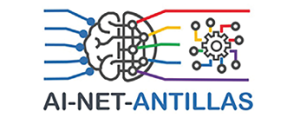 AINET project objective is to provide enablers and solutions for high-performance services deployed and operated at the network edge. They contribute to cyber-resilient intelligent network automation from the edge to the core through the FOG, and from the services to the physical resources, for end users, machine-to-machine and IoT networks. AINET-ANTILLAS concentrates on applying these technologies to automotive / teleoperated driving, manufacturing industry, public safety, and public utility businesses. The goal is to provide enablers and solutions for high-performance services deployed and operated at the network edge or in the cloud.
AINET project objective is to provide enablers and solutions for high-performance services deployed and operated at the network edge. They contribute to cyber-resilient intelligent network automation from the edge to the core through the FOG, and from the services to the physical resources, for end users, machine-to-machine and IoT networks. AINET-ANTILLAS concentrates on applying these technologies to automotive / teleoperated driving, manufacturing industry, public safety, and public utility businesses. The goal is to provide enablers and solutions for high-performance services deployed and operated at the network edge or in the cloud.
ENTRY100GHz: Energy-Efficient Radio Systems at 100 GHz
Start Date: September 2021 End Date: August 2024 Budget (total): 9151.42 K€
Project Coordinator: Chalmers University of Technology (CTH), Sweden
 The aim of the current project is to develop a highly efficient integrated antenna module and RF front-end solution with adaptive waveform generation in spatial, temporal, and frequency domains for beyond 5G (B5G) wireless communication infrastructure at 100GHz band and support other application sectors such as security & sensing, imaging, industrial IOT, automation etc. The proposed solution will be able to adapt dynamically to different user scenarios such as ultra-high data-rate multi-user broadband communication, reliable high mobility connectivity, ultra-low latency machine communications etc.
The aim of the current project is to develop a highly efficient integrated antenna module and RF front-end solution with adaptive waveform generation in spatial, temporal, and frequency domains for beyond 5G (B5G) wireless communication infrastructure at 100GHz band and support other application sectors such as security & sensing, imaging, industrial IOT, automation etc. The proposed solution will be able to adapt dynamically to different user scenarios such as ultra-high data-rate multi-user broadband communication, reliable high mobility connectivity, ultra-low latency machine communications etc.
USWA: Ultra Scalable Wireless Access
Start Date: December 2022 End Date: November 2025 Budget (total): 12883.18 K€
Project Coordinator: Wirepas Oy, Finland
 The project Ultra Scalable Wireless Access (USWA) focuses on technology research how to utilize the new DECT-2020 NR radio technology developed in ETSI in various use cases. DECT-2020 NR provides modern radio interface design with state-of-the-art radio capabilities for industrial use cases. DECT-2020 NR technology supports natively mesh radio network architecture which is enabling large scale local networking by relaying data between different devices and also enabling direct communication between devices. DECT-2020 NR technology can operate in a specific license exempt band used by legacy DECT.
The project Ultra Scalable Wireless Access (USWA) focuses on technology research how to utilize the new DECT-2020 NR radio technology developed in ETSI in various use cases. DECT-2020 NR provides modern radio interface design with state-of-the-art radio capabilities for industrial use cases. DECT-2020 NR technology supports natively mesh radio network architecture which is enabling large scale local networking by relaying data between different devices and also enabling direct communication between devices. DECT-2020 NR technology can operate in a specific license exempt band used by legacy DECT.
F4iTECH: Federated AI Platform for Industrial Technologies
Start Date: March 2022 End Date: February 2025 Budget (total): 2232.44 K€
Project Coordinator: Inosens, Turkey
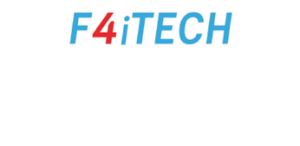 Current AI-based industrial applications have a linear sequential approach for data collection, processing and model deployment cycles where each part of the cycle has a clear task. However, collecting the data required for learning the desired models in one place may not always be possible and centralized data collection may cause data quality issues. This project aims to provide great benefit to the manufacturing and transportation industries by efficiently incorporating artificial intelligence into the production or operation line to resolve and eliminate some invisible and internalized problems that cost a lot.
Current AI-based industrial applications have a linear sequential approach for data collection, processing and model deployment cycles where each part of the cycle has a clear task. However, collecting the data required for learning the desired models in one place may not always be possible and centralized data collection may cause data quality issues. This project aims to provide great benefit to the manufacturing and transportation industries by efficiently incorporating artificial intelligence into the production or operation line to resolve and eliminate some invisible and internalized problems that cost a lot.
COA-CFD: Cloud-based Online Access to Computational Fluid Dynamic Simulations
Start Date: March 2022 End Date: March 2026 Budget (total): 15836.8 K€
Project Coordinator: Engineering Software Steyr, Austria
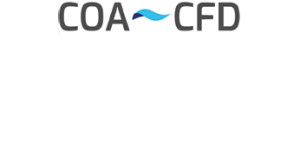 Computational Fluid Dynamics (CFD) simulations utilize computational resources to simulate free flows of fluids (air, water, etc.), and the interaction of fluids with surfaces. CFD simulations are used in development of new mechanical parts in the automotive, aerospace and military industries to increase efficiency. CFD based experiments are cost effective in comparison to conventional methods and can estimate properties which cannot be empirically measured. For the last decade, Engineering Software Steyr GmbH (ESS) has been developing new CFD capabilities (particle-based methods) in the form of four new solvers (CFD simulation programs) and hybridizing them to increase usability.
Computational Fluid Dynamics (CFD) simulations utilize computational resources to simulate free flows of fluids (air, water, etc.), and the interaction of fluids with surfaces. CFD simulations are used in development of new mechanical parts in the automotive, aerospace and military industries to increase efficiency. CFD based experiments are cost effective in comparison to conventional methods and can estimate properties which cannot be empirically measured. For the last decade, Engineering Software Steyr GmbH (ESS) has been developing new CFD capabilities (particle-based methods) in the form of four new solvers (CFD simulation programs) and hybridizing them to increase usability.
AICom4Health: AI-Powered Communication for Health Crisis Management
Start Date: January 2022 End Date: May 2025 Budget (total): 4985.30 K€
Project Coordinator: SII Concatel S. L., Spain
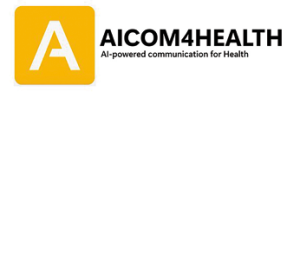 The objective of AIcom4Health project is to offer an innovative solution towards recovering the pandemics negative impacts on public health ,healthcare access and socioeconomics through remote monitoring -AI based platform’s integration to the public’s daily life whereas employing healthier citizens for smart cities s in the area of 5G and beyond, network slicing, edge computing, artificial intelligence and machine learning based on feasible use cases including both medical and non-medical sensors for making accurate decisions and predicting risks against contagion in the future. The use cases include integration of an IoT platform with various types of sensors to monitor physiological, behavioral and environmental data from natural indoors and outdoors environments.
The objective of AIcom4Health project is to offer an innovative solution towards recovering the pandemics negative impacts on public health ,healthcare access and socioeconomics through remote monitoring -AI based platform’s integration to the public’s daily life whereas employing healthier citizens for smart cities s in the area of 5G and beyond, network slicing, edge computing, artificial intelligence and machine learning based on feasible use cases including both medical and non-medical sensors for making accurate decisions and predicting risks against contagion in the future. The use cases include integration of an IoT platform with various types of sensors to monitor physiological, behavioral and environmental data from natural indoors and outdoors environments.
6G-SKY: 6G for Connected Sky
Start Date: May 2022 End Date: April 2025 Budget (total): 8924 K€
Project Coordinator: Airbus Defence and Space GmbH, Germany
 6G for Connected Sky project aims at solutions to enable reliable and robust connectivity for aerial and ground users via flexible and adaptive network architecture adopting multiple technologies such as satellite and direct air to ground communication (DA2GC). In addition, this project focuses on novel wireless network design and management schemes in 3-dimensional (3D) space including different types of flying vehicles with their unique requirements. Another focus is to provide robust, low latency and/or high-capacity communications to ground users in the rural areas without any infrastructure via non terrestrial networks (NTNs), which are already initially introduced in 5G.
6G for Connected Sky project aims at solutions to enable reliable and robust connectivity for aerial and ground users via flexible and adaptive network architecture adopting multiple technologies such as satellite and direct air to ground communication (DA2GC). In addition, this project focuses on novel wireless network design and management schemes in 3-dimensional (3D) space including different types of flying vehicles with their unique requirements. Another focus is to provide robust, low latency and/or high-capacity communications to ground users in the rural areas without any infrastructure via non terrestrial networks (NTNs), which are already initially introduced in 5G.
CANOPY: Cognitive and Automated Network Operations for Present and Beyond
Start Date: January 2022 End Date: December 2024 Budget (total): 4203.35 K€
Project Coordinator: Celfinet, Portugal
 The objective of this project is to create a novel NOC proactive management solution that will enable the evolution from the current reactive mode of operation towards a proactive and preventive mode. The vision is to predict problems that are going to occur before they impact customer service, providing an integrated view of the issue being solved, performing Root Cause Analysis (RCA) to understand and identify what causes triggered the problem and the corresponding recommended resolution.
The objective of this project is to create a novel NOC proactive management solution that will enable the evolution from the current reactive mode of operation towards a proactive and preventive mode. The vision is to predict problems that are going to occur before they impact customer service, providing an integrated view of the issue being solved, performing Root Cause Analysis (RCA) to understand and identify what causes triggered the problem and the corresponding recommended resolution.
CISSAN: Collective intelligence supported by security aware nodes
Start Date: May 2023 End Date: May 2026 Budget (total): 8985.23 K€
Project Coordinator: University of Jyväskylä, Finland
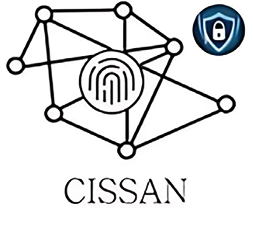 CISSAN proposes and implements algorithms for mitigating IoT security threats through collective decision-making and with a reduced impact on the limited resources of IoT devices. These algorithms are based on research and innovation in optimizing the distribution of security capabilities and aggregating the intelligence in IoT network nodes. Three industrial use cases, on the use of IoT, inform the project developments and are used for validating and demonstrating the project results: (i) public transportation; (ii) smart energy grids; (iii) mining and tunnelling operations.
CISSAN proposes and implements algorithms for mitigating IoT security threats through collective decision-making and with a reduced impact on the limited resources of IoT devices. These algorithms are based on research and innovation in optimizing the distribution of security capabilities and aggregating the intelligence in IoT network nodes. Three industrial use cases, on the use of IoT, inform the project developments and are used for validating and demonstrating the project results: (i) public transportation; (ii) smart energy grids; (iii) mining and tunnelling operations.
IoDT2: Internet of Digital Twin Things
Start Date: May 2024 End Date: April 2027 Budget (total): 2504 K€
Project Coordinator: Loughborough University, UK
As current digital twin practices have limitations due to the central location of most digital twin models, which can cause data processing latency and network bandwidth issues, the freshly labelled project will be built on an Information Centric Network (ICN) inspired digital twin network called Digital Twin Centric Network (DTCN). This will allow digital twin models, data, and compute resources to be published and located across networks easily. This framework will have applications in various industries, such as manufacturing (Industry 4.0), healthcare, and smart cities. To demonstrate and validate the framework, the proposers will use an asset management use case in the aerospace sector.
Further information
CELTIC-NEXT website – https://www.celticnext.eu/running-projects/
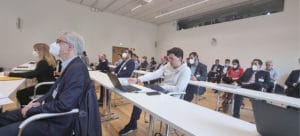
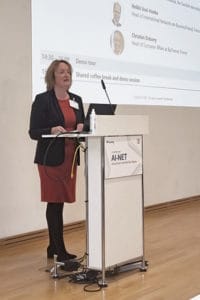
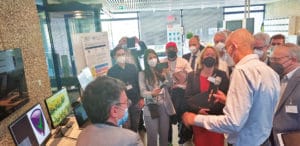
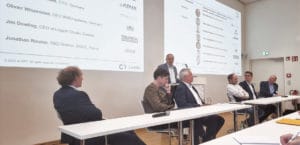
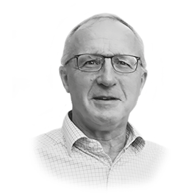
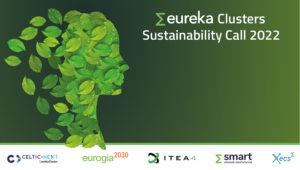

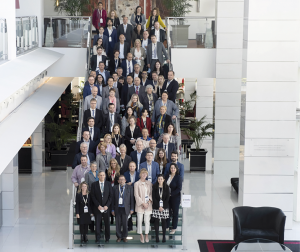
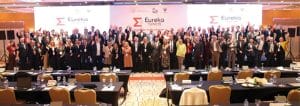
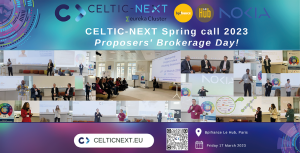
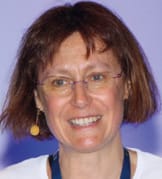

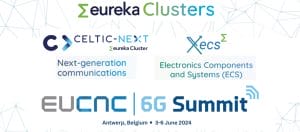



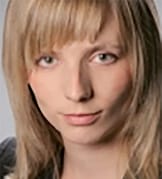
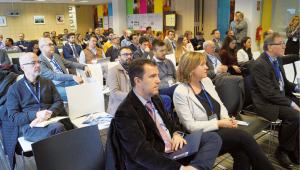
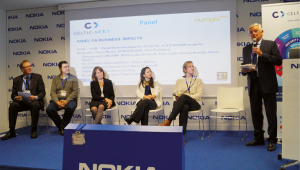
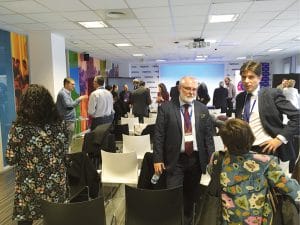



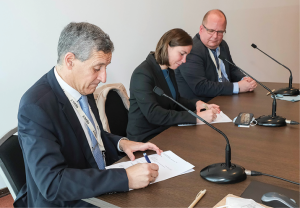

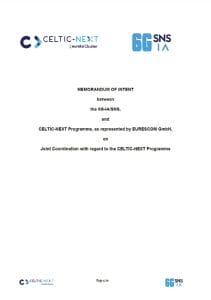
 EMBRACE develops, investigates, and demonstrates the required photonic technology for a complete optical system exploiting the entire spectrum of the single mode fibre (SMF) for applications from metro to long-haul reach. This solution is supported by the large availability of SMFs with almost negligible water peak and thus extended low-loss spectral window. Right now, EMBRACE project is working on solutions to exploit the whole 1260-1625 nm spectrum. Within the project, the designed and prototyped multi-band (MB) components (coherent transceivers, optical amplifiers, wavelength selective switches, lasers) will be integrated into a permanent project demonstrator and tested over real installed fibres owned by the operators participating to the consortium.
EMBRACE develops, investigates, and demonstrates the required photonic technology for a complete optical system exploiting the entire spectrum of the single mode fibre (SMF) for applications from metro to long-haul reach. This solution is supported by the large availability of SMFs with almost negligible water peak and thus extended low-loss spectral window. Right now, EMBRACE project is working on solutions to exploit the whole 1260-1625 nm spectrum. Within the project, the designed and prototyped multi-band (MB) components (coherent transceivers, optical amplifiers, wavelength selective switches, lasers) will be integrated into a permanent project demonstrator and tested over real installed fibres owned by the operators participating to the consortium. SAFE-HOME is a multi-disciplinary project, which exploits the intersection of a number of disruptive technologies, namely sensor design, artificial intelligence and machine learning algorithms, and recent advances in wireless networking, with emphasis on the interoperability of fog-cloud. The project aims at designing a system for monitoring the activity and movement of elders within a confined space (Home), in order to understand their activity level, with ability to identify emergency situations for alerting specific personnel, based on emergency type (e.g. medical staff, ambulance, or emergency contact). SAFE-HOME will also consider users surrounding information (e.g. neighbourhood and city information) in order to enrich solution results.
SAFE-HOME is a multi-disciplinary project, which exploits the intersection of a number of disruptive technologies, namely sensor design, artificial intelligence and machine learning algorithms, and recent advances in wireless networking, with emphasis on the interoperability of fog-cloud. The project aims at designing a system for monitoring the activity and movement of elders within a confined space (Home), in order to understand their activity level, with ability to identify emergency situations for alerting specific personnel, based on emergency type (e.g. medical staff, ambulance, or emergency contact). SAFE-HOME will also consider users surrounding information (e.g. neighbourhood and city information) in order to enrich solution results. The project develops a service framework where increased possibilities for improved wellness and care at home, directed by data driven methods, integrating needs from different stages of life, different caregivers and different diagnosis. A combined strategy of service framework development, business modelling and use case solutions are undertaken and this multi-track approach aims at developing a service framework that enables the creation of flexible user solutions and a business milieu where new digital business models can flourish. Care integration would incorporate a number of different providers, to deliver to the end user in an integrated way.
The project develops a service framework where increased possibilities for improved wellness and care at home, directed by data driven methods, integrating needs from different stages of life, different caregivers and different diagnosis. A combined strategy of service framework development, business modelling and use case solutions are undertaken and this multi-track approach aims at developing a service framework that enables the creation of flexible user solutions and a business milieu where new digital business models can flourish. Care integration would incorporate a number of different providers, to deliver to the end user in an integrated way. The most recent CELTIC flagship project is AI-NET, launched in mid-2021 with a €66M total budget. Public authorities of Germany, Sweden and Finland, as well as major players from industry (both large and SME), and academia, are part of this ambitious European initiative.
The most recent CELTIC flagship project is AI-NET, launched in mid-2021 with a €66M total budget. Public authorities of Germany, Sweden and Finland, as well as major players from industry (both large and SME), and academia, are part of this ambitious European initiative. The primary objective of the ANIARA project is to provide enablers and solutions for high-performance services deployed and operated at the network edge. To manage complexity, of artificial intelligence is used, to complement traditional optimisation algorithms. Deep edge network nodes will be deployed at locations not prepared for the power requirements of edge-centric compute.
The primary objective of the ANIARA project is to provide enablers and solutions for high-performance services deployed and operated at the network edge. To manage complexity, of artificial intelligence is used, to complement traditional optimisation algorithms. Deep edge network nodes will be deployed at locations not prepared for the power requirements of edge-centric compute. The primary focus of the AI-NET-PROTECT sub-project is to provide automated resilience and secure networks operated on trusted equipment to critical infrastructures and enterprises. AI-NET-PROTECT will ensure the protection of critical data, network performance (like latency, throughput, availability), and infrastructure (against tampering and attacks).
The primary focus of the AI-NET-PROTECT sub-project is to provide automated resilience and secure networks operated on trusted equipment to critical infrastructures and enterprises. AI-NET-PROTECT will ensure the protection of critical data, network performance (like latency, throughput, availability), and infrastructure (against tampering and attacks). AINET project objective is to provide enablers and solutions for high-performance services deployed and operated at the network edge. They contribute to cyber-resilient intelligent network automation from the edge to the core through the FOG, and from the services to the physical resources, for end users, machine-to-machine and IoT networks. AINET-ANTILLAS concentrates on applying these technologies to automotive / teleoperated driving, manufacturing industry, public safety, and public utility businesses. The goal is to provide enablers and solutions for high-performance services deployed and operated at the network edge or in the cloud.
AINET project objective is to provide enablers and solutions for high-performance services deployed and operated at the network edge. They contribute to cyber-resilient intelligent network automation from the edge to the core through the FOG, and from the services to the physical resources, for end users, machine-to-machine and IoT networks. AINET-ANTILLAS concentrates on applying these technologies to automotive / teleoperated driving, manufacturing industry, public safety, and public utility businesses. The goal is to provide enablers and solutions for high-performance services deployed and operated at the network edge or in the cloud. The aim of the current project is to develop a highly efficient integrated antenna module and RF front-end solution with adaptive waveform generation in spatial, temporal, and frequency domains for beyond 5G (B5G) wireless communication infrastructure at 100GHz band and support other application sectors such as security & sensing, imaging, industrial IOT, automation etc. The proposed solution will be able to adapt dynamically to different user scenarios such as ultra-high data-rate multi-user broadband communication, reliable high mobility connectivity, ultra-low latency machine communications etc.
The aim of the current project is to develop a highly efficient integrated antenna module and RF front-end solution with adaptive waveform generation in spatial, temporal, and frequency domains for beyond 5G (B5G) wireless communication infrastructure at 100GHz band and support other application sectors such as security & sensing, imaging, industrial IOT, automation etc. The proposed solution will be able to adapt dynamically to different user scenarios such as ultra-high data-rate multi-user broadband communication, reliable high mobility connectivity, ultra-low latency machine communications etc. The project Ultra Scalable Wireless Access (USWA) focuses on technology research how to utilize the new DECT-2020 NR radio technology developed in ETSI in various use cases. DECT-2020 NR provides modern radio interface design with state-of-the-art radio capabilities for industrial use cases. DECT-2020 NR technology supports natively mesh radio network architecture which is enabling large scale local networking by relaying data between different devices and also enabling direct communication between devices. DECT-2020 NR technology can operate in a specific license exempt band used by legacy DECT.
The project Ultra Scalable Wireless Access (USWA) focuses on technology research how to utilize the new DECT-2020 NR radio technology developed in ETSI in various use cases. DECT-2020 NR provides modern radio interface design with state-of-the-art radio capabilities for industrial use cases. DECT-2020 NR technology supports natively mesh radio network architecture which is enabling large scale local networking by relaying data between different devices and also enabling direct communication between devices. DECT-2020 NR technology can operate in a specific license exempt band used by legacy DECT. Current AI-based industrial applications have a linear sequential approach for data collection, processing and model deployment cycles where each part of the cycle has a clear task. However, collecting the data required for learning the desired models in one place may not always be possible and centralized data collection may cause data quality issues. This project aims to provide great benefit to the manufacturing and transportation industries by efficiently incorporating artificial intelligence into the production or operation line to resolve and eliminate some invisible and internalized problems that cost a lot.
Current AI-based industrial applications have a linear sequential approach for data collection, processing and model deployment cycles where each part of the cycle has a clear task. However, collecting the data required for learning the desired models in one place may not always be possible and centralized data collection may cause data quality issues. This project aims to provide great benefit to the manufacturing and transportation industries by efficiently incorporating artificial intelligence into the production or operation line to resolve and eliminate some invisible and internalized problems that cost a lot. Computational Fluid Dynamics (CFD) simulations utilize computational resources to simulate free flows of fluids (air, water, etc.), and the interaction of fluids with surfaces. CFD simulations are used in development of new mechanical parts in the automotive, aerospace and military industries to increase efficiency. CFD based experiments are cost effective in comparison to conventional methods and can estimate properties which cannot be empirically measured. For the last decade, Engineering Software Steyr GmbH (ESS) has been developing new CFD capabilities (particle-based methods) in the form of four new solvers (CFD simulation programs) and hybridizing them to increase usability.
Computational Fluid Dynamics (CFD) simulations utilize computational resources to simulate free flows of fluids (air, water, etc.), and the interaction of fluids with surfaces. CFD simulations are used in development of new mechanical parts in the automotive, aerospace and military industries to increase efficiency. CFD based experiments are cost effective in comparison to conventional methods and can estimate properties which cannot be empirically measured. For the last decade, Engineering Software Steyr GmbH (ESS) has been developing new CFD capabilities (particle-based methods) in the form of four new solvers (CFD simulation programs) and hybridizing them to increase usability. The objective of AIcom4Health project is to offer an innovative solution towards recovering the pandemics negative impacts on public health ,healthcare access and socioeconomics through remote monitoring -AI based platform’s integration to the public’s daily life whereas employing healthier citizens for smart cities s in the area of 5G and beyond, network slicing, edge computing, artificial intelligence and machine learning based on feasible use cases including both medical and non-medical sensors for making accurate decisions and predicting risks against contagion in the future. The use cases include integration of an IoT platform with various types of sensors to monitor physiological, behavioral and environmental data from natural indoors and outdoors environments.
The objective of AIcom4Health project is to offer an innovative solution towards recovering the pandemics negative impacts on public health ,healthcare access and socioeconomics through remote monitoring -AI based platform’s integration to the public’s daily life whereas employing healthier citizens for smart cities s in the area of 5G and beyond, network slicing, edge computing, artificial intelligence and machine learning based on feasible use cases including both medical and non-medical sensors for making accurate decisions and predicting risks against contagion in the future. The use cases include integration of an IoT platform with various types of sensors to monitor physiological, behavioral and environmental data from natural indoors and outdoors environments. 6G for Connected Sky project aims at solutions to enable reliable and robust connectivity for aerial and ground users via flexible and adaptive network architecture adopting multiple technologies such as satellite and direct air to ground communication (DA2GC). In addition, this project focuses on novel wireless network design and management schemes in 3-dimensional (3D) space including different types of flying vehicles with their unique requirements. Another focus is to provide robust, low latency and/or high-capacity communications to ground users in the rural areas without any infrastructure via non terrestrial networks (NTNs), which are already initially introduced in 5G.
6G for Connected Sky project aims at solutions to enable reliable and robust connectivity for aerial and ground users via flexible and adaptive network architecture adopting multiple technologies such as satellite and direct air to ground communication (DA2GC). In addition, this project focuses on novel wireless network design and management schemes in 3-dimensional (3D) space including different types of flying vehicles with their unique requirements. Another focus is to provide robust, low latency and/or high-capacity communications to ground users in the rural areas without any infrastructure via non terrestrial networks (NTNs), which are already initially introduced in 5G. The objective of this project is to create a novel NOC proactive management solution that will enable the evolution from the current reactive mode of operation towards a proactive and preventive mode. The vision is to predict problems that are going to occur before they impact customer service, providing an integrated view of the issue being solved, performing Root Cause Analysis (RCA) to understand and identify what causes triggered the problem and the corresponding recommended resolution.
The objective of this project is to create a novel NOC proactive management solution that will enable the evolution from the current reactive mode of operation towards a proactive and preventive mode. The vision is to predict problems that are going to occur before they impact customer service, providing an integrated view of the issue being solved, performing Root Cause Analysis (RCA) to understand and identify what causes triggered the problem and the corresponding recommended resolution. CISSAN proposes and implements algorithms for mitigating IoT security threats through collective decision-making and with a reduced impact on the limited resources of IoT devices. These algorithms are based on research and innovation in optimizing the distribution of security capabilities and aggregating the intelligence in IoT network nodes. Three industrial use cases, on the use of IoT, inform the project developments and are used for validating and demonstrating the project results: (i) public transportation; (ii) smart energy grids; (iii) mining and tunnelling operations.
CISSAN proposes and implements algorithms for mitigating IoT security threats through collective decision-making and with a reduced impact on the limited resources of IoT devices. These algorithms are based on research and innovation in optimizing the distribution of security capabilities and aggregating the intelligence in IoT network nodes. Three industrial use cases, on the use of IoT, inform the project developments and are used for validating and demonstrating the project results: (i) public transportation; (ii) smart energy grids; (iii) mining and tunnelling operations.